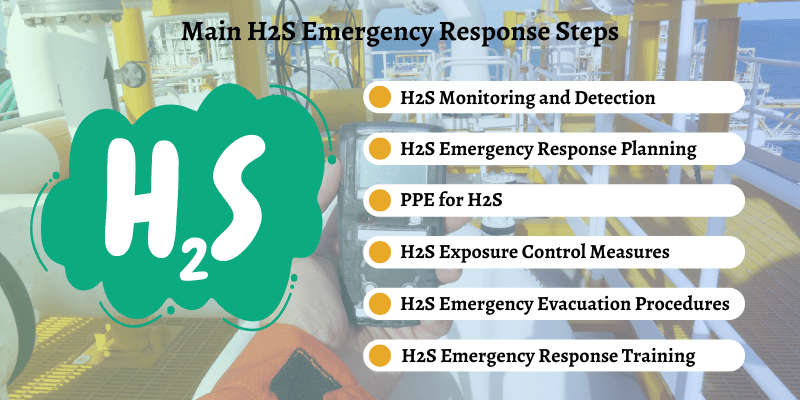Flash Flood Emergency Response: Essential Safety Tips

Table of Contents
Understanding Flash Flood Risks and Warnings
Recognizing Flash Flood Warning Signs
Recognizing the signs of an impending flash flood is crucial for your safety. Don't rely solely on official warnings; learn to identify visual cues that indicate rising danger. Flash flood warning signs can appear suddenly and escalate rapidly.
- Look for overflowing rivers, streams, and creeks. Rapidly rising water levels are a major indicator.
- Note unusual water sounds. A sudden roar or increased rushing water from normally quiet waterways is a significant warning sign.
- Be aware of sudden changes in water color. Muddy or debris-filled water indicates upstream flooding.
- Pay close attention to official weather alerts and warnings. These are disseminated via radio, television, NOAA weather radio, and mobile weather apps like the Weather Channel app or AccuWeather. Sign up for emergency alerts from your local authorities.
Identifying High-Risk Areas
Understanding your surroundings and identifying high-risk areas is paramount in flash flood preparedness. Certain geographical locations are inherently more vulnerable to flash flooding.
- Live in a flood plain? Check local flood maps and understand your flood risk level. Many municipalities provide detailed flood maps online.
- Avoid camping or hiking near dry creek beds after heavy rainfall. These seemingly innocuous areas can transform into raging waterways within minutes.
- Understand your local geography and potential flood zones. Familiarize yourself with the drainage patterns in your area and identify potential flash flood hotspots.
Creating a Flash Flood Preparedness Plan
Proactive planning is the cornerstone of effective flash flood emergency response. This includes assembling an emergency kit and establishing clear communication strategies.
Building an Emergency Kit
A well-stocked emergency kit is your lifeline during a flash flood. Ensure it contains essential supplies to sustain you and your family for several days.
- Include non-perishable food items. Think canned goods, energy bars, and dried fruit.
- Store enough water for at least 72 hours. One gallon per person per day is a recommended minimum.
- Pack essential documents in waterproof containers. This includes identification, insurance information, and medical records.
- Have a fully charged portable power bank. This is crucial for maintaining communication and accessing vital information.
- First-aid kit, medications, flashlights, and a portable radio are also essential.
Establishing Communication Strategies
Establishing clear communication channels is vital, especially if family members are separated during a flash flood.
- Designate an out-of-state contact person. This person serves as a central point of contact for everyone to check in.
- Include emergency contact numbers in your kit. Make sure everyone knows who to call and how to reach them.
- Download weather apps and emergency alert systems. Stay informed about weather conditions and any warnings issued by local authorities.
Responding to a Flash Flood Emergency
Swift and decisive action is critical during a flash flood. Your immediate priority is to ensure your safety and the safety of your loved ones.
Immediate Actions During a Flash Flood
When a flash flood warning is issued or you observe warning signs, act immediately.
- Move to the highest ground possible. Do not wait for the water to approach; act swiftly.
- Avoid contact with floodwaters. They may be contaminated with sewage, chemicals, and debris.
- Never drive or walk through flowing water. The force of the water is deceptively powerful and can sweep you away in an instant. The mantra is "Turn around, don't drown."
Post-Flash Flood Safety Precautions
Returning to flooded areas too soon can be extremely dangerous. Be cautious and informed.
- Be aware of damaged infrastructure, like roads and bridges. These may be unstable or impassable.
- Report downed power lines immediately. These pose a significant electrocution hazard.
- Stay updated on post-flood recovery information from officials. Follow guidance on water safety, potential health risks, and accessing assistance.
Flash Flood Safety for Specific Groups
Certain groups are especially vulnerable during flash floods. Extra precautions are necessary to ensure their safety.
Protecting Children and the Elderly
Children and the elderly require extra attention and care during flash floods.
- Keep young children within eyesight during a flood event. Their vulnerability is significantly increased in a crisis.
- Ensure mobility aids for elderly individuals are readily accessible. Assist them in reaching safe locations.
Conclusion
Effective flash flood emergency response hinges on preparedness, swift action, and post-flood awareness. By understanding the risks, creating a comprehensive plan, and responding decisively, you significantly reduce the potential for harm. Remember the key takeaways: recognize warning signs, build an emergency kit, establish communication strategies, and prioritize your safety. Don't wait for a flash flood to strike; develop your flash flood preparedness plan today! Learn more about flash flood safety and create a comprehensive flash flood response plan to protect your family and property. Stay informed about local weather alerts and be prepared to respond to flash floods.

Featured Posts
-
 La Dispute Ardisson Baffie Cons Et Machos Analyse D Une Querelle Publique
May 25, 2025
La Dispute Ardisson Baffie Cons Et Machos Analyse D Une Querelle Publique
May 25, 2025 -
 Car Dealers Renew Their Opposition To Electric Vehicle Mandates
May 25, 2025
Car Dealers Renew Their Opposition To Electric Vehicle Mandates
May 25, 2025 -
 Hamiltons Classy Act New F1 Testing Footage Shows Support For Former Teammate
May 25, 2025
Hamiltons Classy Act New F1 Testing Footage Shows Support For Former Teammate
May 25, 2025 -
 Nimi Muistiin Ferrari Nappasi 13 Vuotiaan Lupauksen
May 25, 2025
Nimi Muistiin Ferrari Nappasi 13 Vuotiaan Lupauksen
May 25, 2025 -
 The Saint On Itv 4 Episode Guide And Schedule
May 25, 2025
The Saint On Itv 4 Episode Guide And Schedule
May 25, 2025
